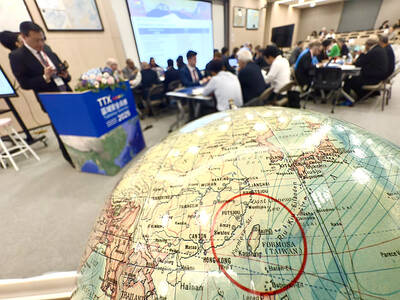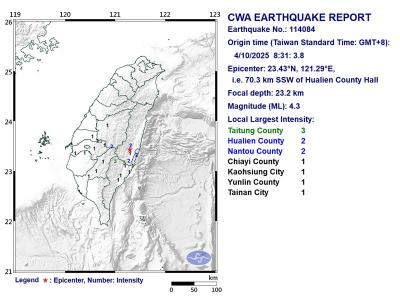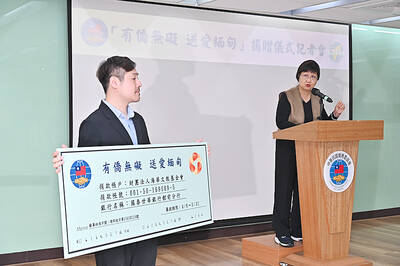Jennifer, mother of one and expecting another baby next month, has been working almost non-stop in the 11 years since she finished her studies and entered the “real world.”
Like many of her friends who are mothers or mothers-to-be, Jennifer doesn’t dare take a long break to prepare for the birth and take care of her newborn afterwards, even if her company allows her to take the time she is legally entitled to.
“Even if the company allows me to take such long breaks, I would not do so, because who knows what will happen when I come back?” she said.
The Council of Labor Affairs has recently been considering an amendment that would allow female workers to take a maximum of one year of unpaid leave to prepare for a birth. This period would allow a pregnant worker to take measures to avoid a miscarriage or receive treatment for pregnancy-related discomfort and illnesses.
Pregnant women would have to present medical proof from their doctors recommending a set period of rest in order to claim the time-off allowance.
The council’s proposal, however, has faced widespread criticism from labor and business groups alike. Labor groups and working mothers such as Jennifer doubt the plan will have any real effect because women who fear losing their jobs while on leave end up choosing not to take such long breaks.
Although the Act for Gender Equality in Employment (性別工作平等法) prohibits employers from discriminating against mothers or treating mothers unfairly in the workplace, women like Jennifer still worry that while they are on their long breaks, their employer will find someone else to replace them — permanently.
National Federation of Independent Trade Unions (NAFITU) president Chu Wei-li (朱維立) said that although he is glad to see the council was mulling such a proposal, he’s doubtful the plan would really work.
“Even if pregnant women are allowed to take unpaid pregnancy leave, some of them might insist on going to work despite the risk of miscarriage because if they don’t work, they don’t have an income,” he said.
Chu said that without measures to ensure that women would not need to worry about their jobs or lost income, the plan might look good, but have no real effect.
While the Act stipulates that employers cannot discriminate on gender, if authorities do not step up efforts to implement the regulations and inspect businesses and punish violators, then the Act is merely “an illusion.”
Business groups and employers, on the other hand, said replacing a worker who takes such long breaks would be costly.
“Businesses need a certain amount of time to train new employees, even those who have some work experience. It is difficult for some businesses to afford the salaries of both the replacement and the working mother who comes back to work after giving birth,” said Paul Wang (王振保), secretary-general of the National Association of Small and Medium Enterprises.
Wang’s sentiments were reflective of many individual business owners who, while generally agreeing that women are as valuable in the workplace as men, may not like the cost-benefit equation that the plan would inevitably bring about.
Edward, who runs his own international trade business, said that if the plan was put into effect, he might reconsider certain promotion opportunities for pregnant employees.
“It’s difficult for me to admit this, but I do have some concerns about whether an expectant mother who takes such a long time off is able to handle the heavier workload and responsibilities that come with a promotion,” he said.
Edward is not alone in thinking this way. His hesitation highlights one of the biggest challenges working mothers face, with or without social welfare legislation. Although pregnancy leave is intended to benefit pregnant workers, without supportive measures to back up the plan, women will be the ones forced to pay for their — and society’s — lifestyle choices.

Taiwan is stepping up plans to create self-sufficient supply chains for combat drones and increase foreign orders from the US to counter China’s numerical superiority, a defense official said on Saturday. Commenting on condition of anonymity, the official said the nation’s armed forces are in agreement with US Admiral Samuel Paparo’s assessment that Taiwan’s military must be prepared to turn the nation’s waters into a “hellscape” for the Chinese People’s Liberation Army (PLA). Paparo, the commander of the US Indo-Pacific Command, reiterated the concept during a Congressional hearing in Washington on Wednesday. He first coined the term in a security conference last

DEFENSE: The National Security Bureau promised to expand communication and intelligence cooperation with global partners and enhance its strategic analytical skills China has not only increased military exercises and “gray zone” tactics against Taiwan this year, but also continues to recruit military personnel for espionage, the National Security Bureau (NSB) said yesterday in a report to the Legislative Yuan. The bureau submitted the report ahead of NSB Director-General Tsai Ming-yen’s (蔡明彥) appearance before the Foreign and National Defense Committee today. Last year, the Chinese People’s Liberation Army (PLA) conducted “Joint Sword-2024A and B” military exercises targeting Taiwan and carried out 40 combat readiness patrols, the bureau said. In addition, Chinese military aircraft entered Taiwan’s airspace 3,070 times last year, up about

A magnitude 4.3 earthquake struck eastern Taiwan's Hualien County at 8:31am today, according to the Central Weather Administration (CWA). The epicenter of the temblor was located in Hualien County, about 70.3 kilometers south southwest of Hualien County Hall, at a depth of 23.2km, according to the administration. There were no immediate reports of damage resulting from the quake. The earthquake's intensity, which gauges the actual effect of a temblor, was highest in Taitung County, where it measured 3 on Taiwan's 7-tier intensity scale. The quake also measured an intensity of 2 in Hualien and Nantou counties, the CWA said.

The Overseas Community Affairs Council (OCAC) yesterday announced a fundraising campaign to support survivors of the magnitude 7.7 earthquake that struck Myanmar on March 28, with two prayer events scheduled in Taipei and Taichung later this week. “While initial rescue operations have concluded [in Myanmar], many survivors are now facing increasingly difficult living conditions,” OCAC Minister Hsu Chia-ching (徐佳青) told a news conference in Taipei. The fundraising campaign, which runs through May 31, is focused on supporting the reconstruction of damaged overseas compatriot schools, assisting students from Myanmar in Taiwan, and providing essential items, such as drinking water, food and medical supplies,